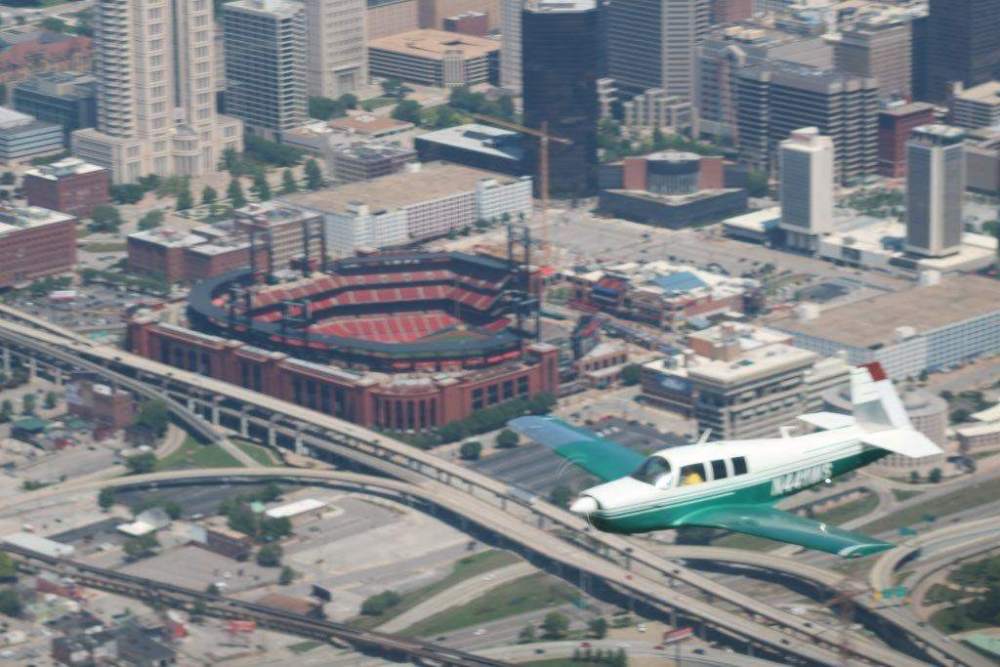Leaderboard
Popular Content
Showing content with the highest reputation on 06/23/2018 in all areas
-
1000’ and all three knobs forward, angle of bank equals degrees of turn, up to 60 of course. And most of all, watch out for birds and have fun. Dont forget to slide your seats back fully. It matters.3 points
-
3 points
-
Greetings Mooney Space! About to turn 30 and I think I might be starting to have my first mid-life crisis. I got back into flying this year after a 7-year hiatus (thanks Congress for your 1500 rule) and hate being at the mercy of the availability of rental aircraft in the DFW area. I have my instrument rating. Doing some IFR refresher courses to get back up to speed. Looking for any advice on Mooney buying + avionics upgrades. The aircraft I am currently looking at looks to be in good condition, hangared in a dry location. It has an HSI, VOR, King radios. It also has an ADS-B transponder. No GPS or Autopilot though. Looks like over the past 7 years - WAAS has become the new "must have item". Always open to flying pointers on the aircraft type. I have never flown a Mooney before. The speed + fuel efficiency really appeals to me plus the acquisition cost is significantly less than a 182 and goes faster than an Arrow. If anyone wants to see the exact AC in question, just PM me (but promise not to try and buy it) Thanks!2 points
-
You will love it - unless you need to carry 4 adults any more often than occasionally. 3 people + bags works fine, with back passenger sitting side saddle and still usually lets you carry full fuel. If you can find one with WAAS and A/P already you will save a lot of $$, but you can also waste your life waiting for exactly the right plane. Consider airframe>engine>avionics>paint/interior in the buying decision. If you're set on a short body Mooney, the C is worth considering also. There's tons of searchable guidance on this site regarding what to look for and how to conduct a prebuy, but I'm happy to take a look at the info on the plane.2 points
-
I have owned my 80 231K/Rocket for about 5 years now. I have NEVER seen Fuel Flows at the level they should be. Maxed out around 27gph on full power. I have mentioned this every oil change/annual. I was always told it was within specs. Well, the last few flights it never came above 23gph. I mentioned this again. Time to send fuel pump out (fine) a new/rebuilt one comes back. Now fuel controller is dumping gas. It goes out (fine). All put back together and log notes state totalizer is showing 5GPH high. I scratch my head.. NO WAY. It's been spot on for 5 years (even had a conversation about it with maint. manager) I was shown the certified gauge they used to set it up. He says, "keep an eye on it and let me know." I decide it's best for me to go solo on this one. I enter the runway and slowly push up the manifold pressure.. the fuel flow keeps climbing and climbing at gets to around 39gph. (they did say it was showing 5 gph high) But, I am hauling A** and by this point very far behind the aircraft and decide its time to stop watching and start flying. Well, I'm well down the runway and moving fast, so when I rotate I blast off!! and that's when the motor just went BLAAAAHH. I made the immediate decision that I was not ending up on the other side of the fence. In one swoop I had pulled the power, put out airbrakes, and put the plane into one of the wildest slips you would ever see this close to the ground, while at the same time dropping flaps. I hit the ground just as I rolled out of the slip. Had to commit to another decision. If I went off the end of the runway, into the grass/downhill, I'd loose all braking force and still be in the fence. So I got as far to the right as possible and cut the left corner off the runway with tires screaming. I fully expected to hear metal crunching as wing hit or gear collapsed. I got it stopped in the staging area. Then realized the motor was running fine. So, obviously. My gauge is fine and I totally flooded the motor on takeoff. After some extremely direct "conversation" with the Maint. Manager. He offered to purchase a new gauge and look at it. Just got a phone call. The rebuilt core housing is bad and wont let the set screw hold the adjustment screw in place. So, it was backing out and increasing the pressure. They had it set correctly in the hanger but, when they buttoned everything up and did a final run the totalizer showed 5 high, because.. it was after the adjuster backed out. I'm not really sure what the moral of this story is. It should NEVER have left the rebuild company like this. My guys SHOULD have caught the problem. I SHOULD have insisted on more follow through/testing before attempting to fly. Just sharing a story, because it was scary.2 points
-
I hate disagreeing again in the same thread, but with the right instructor I just doesn’t see the transition to be a big deal. Five hours, maybe, but with the right instructor I just don’t see how in the world it could be ten.2 points
-
Maybe that says more about SR-22 pilots than it does about LSAs2 points
-
Same frictional area, more weight. The burden of being frequently correct is a heavy one.2 points
-
I hate to be in disagreement, but I am puzzled when I read claims that a Mooney is hard to fly. Yeah, there is landing gear and a constant speed prop, but it is a tricycle plane that is easy to deal with on the ground. I see the Mooney as being quicker to learn basic flight than the planes I started with. Just my two cents and my opinion, not trying to be difficult. Edit: To add to this, I have read on this forum things about flying a long body. To exemplify what I have read, I have gotten the impression from some posts that it was sort of like; “ well, yeah, you can fly a C, but you REALLY need to get some training before moving to an F or a J.” Well as always I took these comments seriously and was led to the point of expecting an F to be as challenging as landing the space shuttle. This past Thursday a friend of mine took me flying in his beautiful F model. He had flown with me in my C and felt comfortable enough with me that he told me it was my airplane. I flew a hood off approach and flew it to the ground after telling him to take over if he didn’t feel comfortable with my flying or in particular my landing. It surprised me, but I flew it to the runway and landed it. It really didn’t feel much different than my C model. You think I could pull off a shuttle landing?2 points
-
And a power aid bottle in the seat back pocket for when the ratio is pro liquid..... Sent from my iPhone using Tapatalk2 points
-
That’s a very Odd place for rock damage. However, depending how many times that Propeller has been O/H that is the thickest part of the blade. That being said, at 2700rpm there is a lot of tonnage being supported in that area. If that nic was 3 inches in from the tip it wouldn’t be nearly as big of issue as it is where it’s at. You will want the bottom(deepest) portion of that damage relived before it has a chance to propagate. Very high Stress in that area. I will attach photo of what that can end up looking like if not addressed. Same area of the blade In my Opinion: Both Blades should be ground in that area to keep weight an aerodynamic contouring between the blades consistent while removing the damage. To do a localized grind on that in the field will take care of the bottom of the damage, but it will also lead to potential balance issues an aerodynamic differences in the blades which cannot be dynamic balanced out.2 points
-
Cheez-Its and/or trail mix seem to help with "pilot endurance." It's a balancing act between staying hydrated enough but not over-hydrated.2 points
-
As some others have said I think a J is the best bet for you. I have owned mine for 8 years and 1000hrs and routinly fly to Mammoth, Vegas to Napa over the Mts, and make 1-2 trips to the Bahamas every year. My brother use to live in Denver and I would go visit once a month. The route i settleled on was over the southern Rockies through Laveta Pass then north over Colorado Springs. I would cross around 14k with no prob at all even with high density altitudes. I love my J and after new paint, interior, engine, prop ADSB it’s time for something bigger with two engines. It always happens right when you get an aircraft dialed in. Anyway i am based at VGT and if I can make a deal work on a 310R it may be for sale in a month or so. PM me your info if you are interested and we can chat. I have had very little surprises over the years and all the big ticket items were expected. The J is a great aircraft with good all around performance that is easy on the wallet.2 points
-
Left Rapid City, SD (KRAP) yesterday for Wausau, WI (KAUW). The trip itself was uneventful. However, In Rapid I saw 1 of 2 airworthy (so I'm told) 1929 Ford Tri-motors sitting on the ramp behind me. What a beauty! I could not help but wait and watch her lift off in to the air. If that doesn't lift your spirits, check yourself for a pulse. You can't help but love these old birds. Control wires outside. Corrugated metal wings-I guess for added strength . Engine gauges are outside. Only the front engine has inside gauges. The Yoke is a steering wheel. "It's a Ford"2 points
-
I haven’t done them in the Mooney but I fly them in the 737 all the time. Your going to need some extra equipment and an ops spec/authorization approval to fly most of these. .1,.2,.3 RNP are commonly what you will see out there with more on the way as PBN (performance based navigation) becomes the way. LPV approaches have pretty similar minimums at most airports, just no RF legs. They are pretty neat to fly in the terrain rich environments. We still have a few tailor made approaches into CYXX and CYLW specific to the 737NG/MAX that we developed. Thing of beauty whatching that terrain display as it goes LNAV/VNAV path all way to mins. There are some RNP departures out there too. Sent from my iPhone using Tapatalk2 points
-
I flew over to Lakeland County (Woodruff, WI) this afternoon for their Hamburger Social. I took a friend of mine and his grandson. He really enjoyed it. I'm struggling with my A/C yet, although almost perfected and should be up soon (waiting on parts). We roasted going over and my fresh air vent didn't seem to be working (seemed like just recirculating the cabin air). With pressurization, I have both a cable operated "door" on the NACA scoop vent tube AND a gravity "paddle" door inside the cabin to seal the inside for pressurization. I was having problems with it sealing last year but found some duct tape put on it during testing was hanging it up. During this past winter, I installed a tab to hold it closed just to be sure I didn't have further problems. My painter/upholstery shop was supposed to take a little aluminum tab off the locked the door (during the the upholstery work and I suspected he didn't. I pulled it apart and sure enough, the lock tab was still there. So............I had to go up again just before dark to see if the vent was letting in cooler outside air (it works great and still pressurizes as well). Anyway, it was just at sunset so I headed north and got a couple nice shots of the very tip of Michigan, the Keweenaw Peninsula, with the sun setting and some pretty clouds. Thought I would share. Tom )2 points
-
Calling him names will only provoke a response in the manner you don't want to see . . . . If no one quotes his response, I won't see it, courtesy of the "Ignore User" feature. Ya'll fly safe out there! P.S.--for an expected gear up landing, I'll take asphalt or concrete over uneven grassy soil of unknown consistency where my lower prop blade(s), carb chin, fixed step, belly beacon, flap hinges, etc., may dig in, affecting my track across the ground and increase sheet metal damage through stuck pieces folding back, breaking off and / or wrenching their supporting structure.2 points
-
Expect for performance, yes... In real life, no... Real life... has a flap speed that is pretty easy to exceed. exceeding a flap speed bends/cracks a minor spar. minor spars are expensive to replace... Air cooling is crummy at speeds less than 120 IAS... Crummy cooling leads to high CHTs... High CHTs lead to large expenses... T/O flaps add additional drag So, unless you are climbing out over a mountain or trying to clear the local Class Bravo... climb clean @120 and enjoy the ground covering speed with added fuel efficiency and decent air cooling... PP thoughts only... the ancient Mooney texts were creative literary pieces of salesmen’s dreams... part factual, but funky delivery... they didn’t think you would refer to them again after your first few flights... so it seems... You get a few choices... Vx best rate of climb per distance Vy best rate of climb per time VMS best rate of climb per dollar spent overall from an owner point of view... And... that 77POH is great compared to anything available before it...! I’m not a CFI... Best regards, -a-2 points
-
There has been a lot of discussion lately on turbos, power settings, etc. I'm no expert on this subject and am still learning all I can. I fully intend to someday have @kortopates, or @donkaye, or Brian Lloyd, in other words, a true expert, ride with me in my 252 and teach me how to fly it properly. But in the mean time I document my flights and try to learn from experience. One of the ways I document my flights are to take pictures of the panel. My new panel layout lends its self well to this method. You can see in each picture the Aspen with all the air data and the JPI with all the engine parameters. The pictures are named based on ROP/LOP and the percentage of power at the time. The pics are here if anyone cares to take a look. https://drive.google.com/drive/folders/1BmxtvTtWAWXTqEkQ6lsq0t94zcQl0km7?usp=sharing I also upload all my flights to SavvyAnalysis. If I ever decided to sell this bird, a prospective buyer will be able to see every single flight I've made and what the engine parameters were for each. And if you see something you don't like here... by all means, let me know.1 point
-
Thanks, that was enough to get it working the rest of the way. Seems pretty solid now.1 point
-
For point 1, this all could be related to points 3 and 4. I am sure the algorithm is based on averaging those data points to make intermediate calculations for quantity left and reported. The linearity of that line may be slightly skewed since the data points are on the low side and less from the high side. In other words, if on a 64 gallon tank they did calibrations at 0, 5, 10, 20 and full, the readings between 20 and full may not be linear. On the other hand, calibrating at the low end, you are probably a lot more accurate. I am finding the way Terry and I calibrating it is working fine all the way through the fuel quantity levels. On point 4, absolutely. Bob has shown it doesn't register correctly until the fuel is burned down a bit. Bob should be able to chime in on what he is seeing with his two sender CiES installation.1 point
-
1 point
-
1 point
-
You can buy two of the LASAR combination tie down ring and jack point thingies . . . .1 point
-
Any airplane can be used as a trainer so long as the CFI is attentive and doesn’t let one crash the fool thing.1 point
-
1964 E models above SN 400 came with the PC wing leveler system which is a good half-way step towards an autopilot.1 point
-
Okay, thank you again fo rall the comments. Yesterday, I tried the M20Doc-method: I had two attempts of cold starts with 10hour parking between them. So, that defintitely is not much to have a real opinion. - Mixture and throttle wide-open - Use the HIGH-Boost-pump until you see FF. I was really surprised about the fast an massive rising FF of over 12gph or more and let go the button immediately. - Throttle back to 1/4" above ilde - Engine started, but still needed some more priming. Next time, I was not that shy and let the HIGH-Boost do its job just about a second longer. Indeed, I had the best engine start ever. WIth an engine that run with constant ~ 1200RPM, no stumbling, no additional priming . nothing. The next time, I will use the jlunseth-method. Hope, I have enough hands to handle anything1 point
-
Some notes on gov failures and the mode they choose to fail in... 1) Most but not all Mooneys fail to high rpm.... when oilpressure isn’t being delivered to the prop. 2) lots of reasons oil fails to get there... The gov has it’s own gear pump for that... 3) wear can keep things from working... 4) fly weights have a tendency to stick... when worn.... 5) when govs fail, it is possible for the engine to overspeed and not deliver full power while overspeeding... 5.1) My M20C had a gov fail, not really... the oil line to the prop failed with an internal leak... the oil pressure couldn’t keep the prop off the fine setting stop. Know the crank has a seal in it that can get loose. 6) Mooney Missiles and Rockets have a gov that fails to low rpm... great for having an engine out, at high altitude. The glide distance is as good as it gets... 7) failing to low rpm can be pretty terrible during the T/O phase of flight... the prop can bog the engine down with excess load... 8) One MSer with a Rocket has had an engine out at really high altitude... but he has an upgrade for his engine, a four bladed prop... I’m not sure which gov @aviatoreb had for that fateful flight... but the glide distance of the Rocket was enough to get down safely to a runway.... 9) it is important to know the failure modes for your prop... especially if you fly a Rocket or a Missile... PP thoughts only... not a mechanic... Best regards, -a-1 point
-
Well the Mooney is on the jacks and the wheels are removed, the Cessna is sitting on blocks with no wheels as well. All six wheels were split to remove any water trapped in the tire, all of them had moisture on the tube & tire. Lucky in a way both planes had the bearings repacked the oldest being less than 3 months ago, after cleaning and inspecting I have 2 outer races with water marks and 1 bearing that will get replaced, not too bad considering. My hangar neighbor came by Thursday to see what got damaged in his hangar, same thing, if it floated it wasn’t were you had left it, his plane was across the field high and dry at the AI’s hangar (turbo R&R) so he offered his hangar for as long as needed so the Cessna is over there now (much more room to work). After spending close to 20 hrs getting to this point I have decided to paint all 6 wheels (might as well have something good come from this). Piloto will be so proud, WD-40 was sprayed everywhere to displace any moisture in/on the axles and all the hardware for the brakes and wheels, I buy it by the gallon and use it when machining aluminum so it was on hand. The real bitch was the temperature and humidity today, both big shop fan motors got flooded as well so Saturday between primer and paint drying the fans will get taken apart, cleaned and lubed and my box fan from the garage is already in the truck. What amazes me is I have seen 9 aircraft (there is more) including my 2 that had water past the wheel bearings and the owners don’t seem to be worried about it, 2 of the guys flew theirs today and didn’t even bother to wipe or wash them off.1 point
-
All of my aircraft purchases and sales have been pleasant experiences. All have been with honorable people. What you would expect from fellow pilots. The guy I bought my mooney from is a CFI and former part 135 pilot and took a few days of his time to give me transition training at no charge and really at his urging. I bought him lunches and a few bottles of nice liquor, but he did not expect even that. Like a good landing, much of what you reap in a purchase and sale experience is in the approach.1 point
-
Nice - yes there is damping, but in this case it is mostly from the JPI side. We have several scenarios we can utilize depending on application. See u at OSH 181 point
-
Great to hear. I was there today and had a good impression. The cam is, as expected, damaged. And some of the cylinders are showing their age. The crank and connecting rods are in great shape. With only 1200 hours on it, its really in the grey area between doing the cam repair and cylinders vs the whole thing. You could probably flip a coin on it. Their are reasons to convince yourself both ways. I told them to go ahead with the overhaul. Its off the plane and the repair is basically half way to an overhaul anyway. Fingers crossed this means we are done with major projects for a while.1 point
-
Have you contacted LASAR? If anyone has a serviceable used one they will. I’d expect anything they sell will have a 8130. Talk to Dan in the Parts Department. He is a great resource and really knows his stuff.1 point
-
Took my plane to Air Mods in NJ. Adjustments were made to the flux capacitor and got an oil change on a short 1 hour notice phone call......did not backfire on the landing back home....1 point
-
Someone asked that question in my college flying club in Texas when we had a "ground school" session for those interested in checking out in our F model Mooney.... "Where is the best place to land a Mooney if you can't get the gear down?" Answer: "Kerrville" Sent from my LG-US996 using Tapatalk1 point
-
Ok—Guilty as charged. My point: It is easier to fly than a piston engine.1 point
-
If I remember right, don't you do a GEEAR check instead of a GUMPS check? Gear... Everything Else As Required.1 point
-
Yep, same in my C. I learned to leave Mixture off the GUMPS check. Just left it lean all the way to the ground. If I needed to go around, I could get both black and red knobs at the same time.1 point
-
Time has a way of slipping by almost unnoticed---until it is. Yesterday I had the honor of participating in a Wright Brothers Master Pilot awards presentation. There were 3 of us getting the award. One of the requirements is having flown for 50 years. The time starts from the first solo flight. Not surprising all of us had first soloed in 1967. As I listened to the accomplishments of the other 2 participants given by Karen Arendt, the FAAST Team manager at the San Jose FISDO, I marveled at how unpretentious both were in our pre award conversations. You can do a lot in 50 years, as was demonstrated by these two individuals. Karen first showed a movie detailing the Wright Brothers step by step achievement towards attaining powered flight. Then she detailed the histories of each pilot with input from each as she went along. Photos from each of us went a long way in guiding those biographies. I remember Karen talking to me about receiving the "Blue Ribbon Package" which determines one's eligibility. That package was given to each of us and contained every document the FAA has ever had on us. Once home I reviewed it, and a lot of memories were brought back. It contained the results of every knowledge test, every flight test ever taken, every medical, and every renewal of the flight instructor certificate. Needless to say after 50 years it is pretty thick. And just think, the FAA has this record on each and every pilot in the United States. We were given a beautiful plaque, a letter acknowledging 50 years of our lifetime in aviation, and lapel pins for us and our spouses. The celebration finished wth distribution of pieces of cake that Karen brought and is shown below. All in all quite a day.1 point
-
My C will make popping sounds if I run it rich during descent. Aggressive leaning eliminated it for me.1 point
-
Mooney go fast because is slick. Flaps make Mooney not slick. Flaps bad. Climb fast with no flaps, keep engine happy. Happy engine make happy pilot. Happy pilot make happy Mrs. Pilot. Happy Mrs. Pilot make Pilot more happy. Flaps bad.1 point
-
Yep, going to start in the morning (unless it floods again) and I'll actually split the wheels so it will be a long day(+)1 point
-
Thanks for sharing your horror story! Who did your CMI pump rebuild? Did they bring it up to the latest pump configuration for your TSIO-520 called out by CMI? Your story is a good lesson/reminder for many that think its okay to load the family up or depart IMC right or even for a long x-ctry flight right after extensive maintenance when really a maintenance flight is is required to prove the aircraft is all okay first. Ground run ups only go so far.1 point
-
Now EVERYONE will want to come in for the St Louis formation tour! And everyone is welcome! Had a great time with "Patches" and his family, to include a celebratory lunch following our flight. The friendships afforded by our passion for flying are priceless. Cheers, Rick1 point
-
Ok, so it wasn't "today's" flight, but I just got the pictures from a flight we took on Memorial Day around St. Louis. Big thanks to @Junkman for leading our tour and to my brother, Matt, for being our photographer. My dad, Everett, rode copilot with me and my son, Matthew, rode copilot with Junkman. Photos in order: Preflight briefing, taxi, Daniel Boone bridge, river bluffs, the Stan Span, Gateway Arch, Busch Stadium, Budweiser brewery, close formation, post flight smiles.1 point
-
Rocket will be launching Thurs. Will likely be solo, and on the bottle in the flight levels for a non-stop run to MSN, (depending on winds).1 point
-
1 point
-
Looking at the data I see that when I took 4 minutes to climb from 8000 to 9000' the fuel level went from 19.1 up to 19.7. It took about 3 minutes after I leveled off for the fuel level to return to 19.1. This indicates to me that the float is sensitive to pitch and that there is dampening going on.1 point
-
That’s the weird thing - they don’t bounce around in flight. The number stays solid until it flips down to the next gallon if you are burning from that tank. If I switch tanks, that amount of fuel indicated doesn’t change at all. I’ll need to look at my JPI data and compare to the log I keep. I am consistently within 0.2 gallons between the fuel totalizer and the gallons I put in. I sometimes will see a gallon off on the fuel gauges, but it probably is the rounding it does. Sent from my iPad using Tapatalk Pro1 point
-
My name is Phil Jimenez, I've been working on Mooney's since 1987. I have owned 6 Mooneys. I work on Mooneys exclusively. If you have any questions call me, be glad to help P J Aircraft Svc, Inc 1460 West Bell St Avon Park, Fl 33825 863-873-99991 point

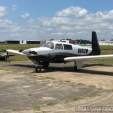



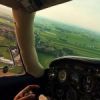








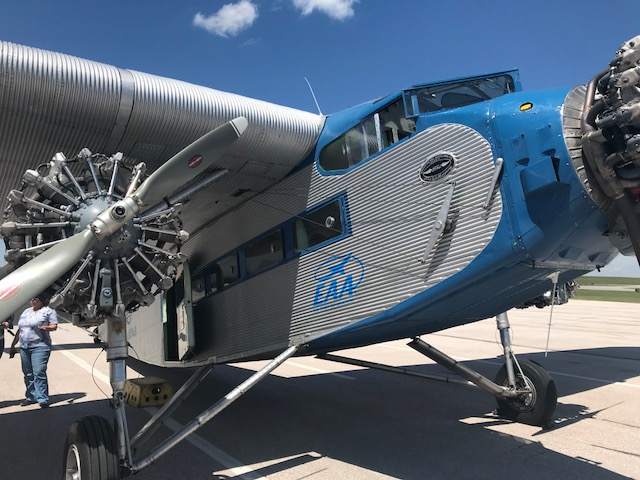

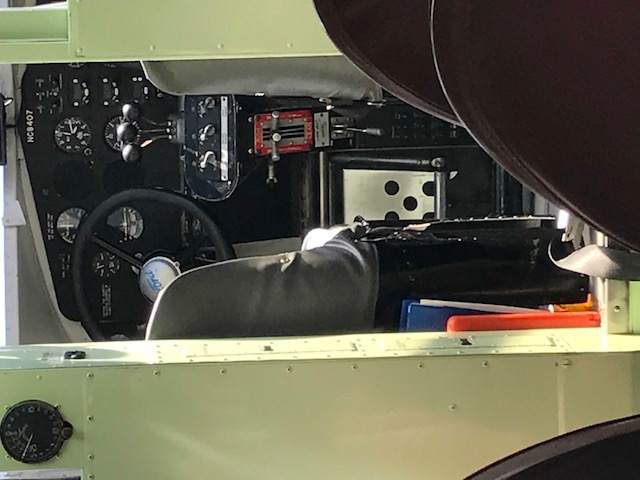


.thumb.jpg.febf8c5f5d543145e01c222ba860b2a1.jpg)





















